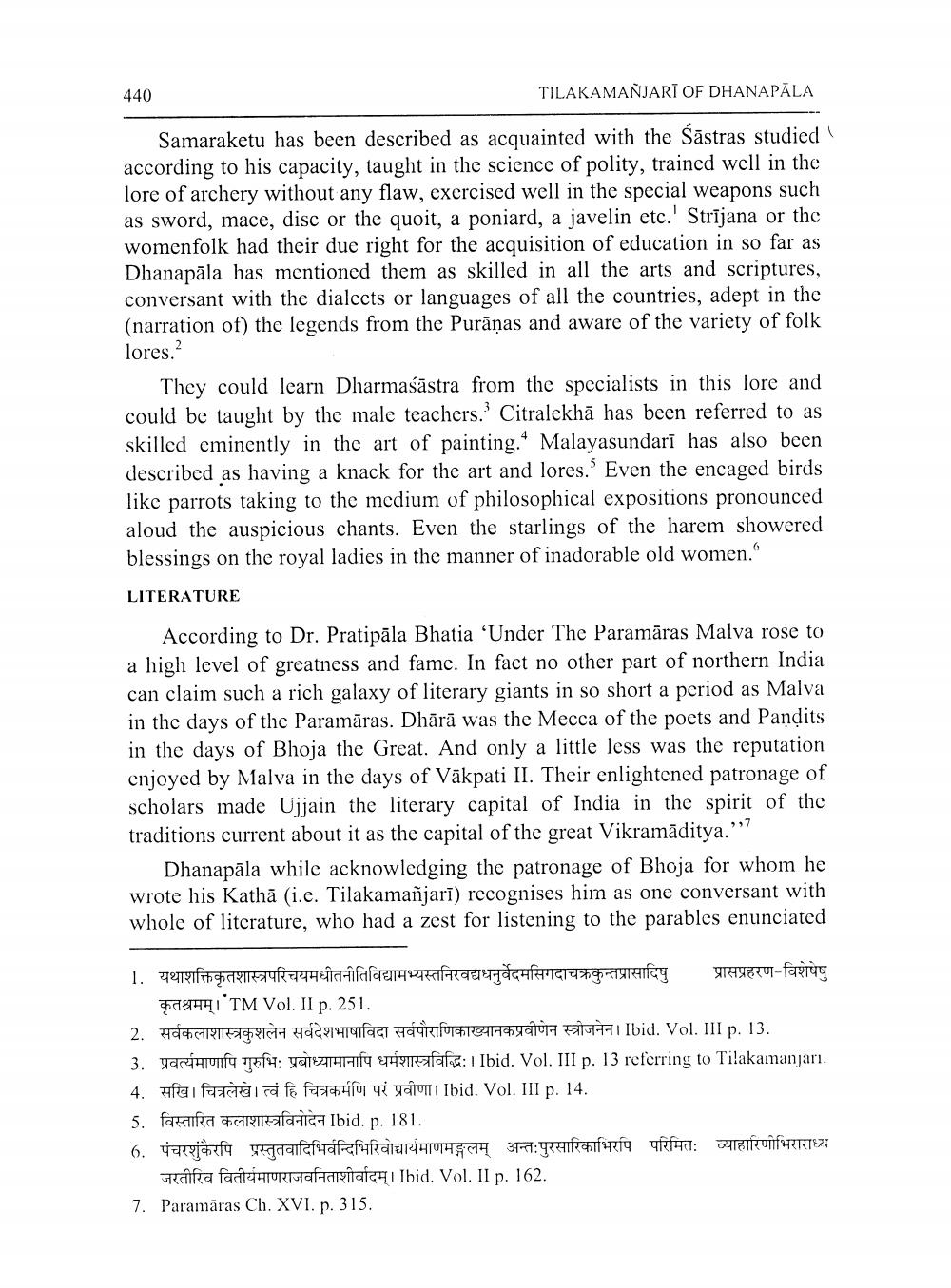________________
440
TILAKAMANJARĪ OF DHANAPĀLA
Samaraketu has been described as acquainted with the Sāstras studied according to his capacity, taught in the science of polity, trained well in the lore of archery without any flaw, exercised well in the special weapons such as sword, mace, disc or the quoit, a poniard, a javelin etc. Strījana or the womenfolk had their due right for the acquisition of education in so far as Dhanapāla has mentioned them as skilled in all the arts and scriptures, conversant with the dialects or languages of all the countries, adept in the (narration of) the legends from the Purāṇas and aware of the variety of folk lores.
They could learn Dharmaśāstra from the specialists in this lore and could be taught by the male teachers. Citralekhā has been referred to as skilled eminently in the art of painting.Malayasundarī has also been described as having a knack for the art and lores. Even the encaged birds like parrots taking to the medium of philosophical expositions pronounced aloud the auspicious chants. Even the starlings of the harem showered blessings on the royal ladies in the manner of inadorable old women.' LITERATURE
According to Dr. Pratipāla Bhatia 'Under The Paramāras Malva rose to a high level of greatness and fame. In fact no other part of northern India can claim such a rich galaxy of literary giants in so short a period as Malva in the days of the Paramāras. Dhārā was the Mecca of the poets and Pandits in the days of Bhoja the Great. And only a little less was the reputation enjoyed by Malva in the days of Vākpati II. Their enlightened patronage of scholars made Ujjain the literary capital of India in the spirit of the traditions current about it as the capital of the great Vikramāditya.”?
Dhanapāla while acknowledging the patronage of Bhoja for whom he wrote his Kathā (i.e. Tilakamañjarī) recognises him as one conversant with whole of literature, who had a zest for listening to the parables enunciated
1. यथाशक्तिकृतशास्त्रपरिचयमधीतनीतिविद्यामभ्यस्तनिरवद्यधनुर्वेदमसिगदाचक्रकुन्तप्रासादिषु प्रासप्रहरण-विशेषेषु
1994 TM Vol. II p. 251. 2. HAHARAPICHA HOC241911 der Hallefu 14714440tura 2151-741 Ibid. Vol. III p. 13. 3. Tarih 14: TEZAHIY TÁRafale: 1 Ibid. Vol. III p. 13 referring to Tilakamanjarı. 4. fai factaira fe ferafu TË Natuiti Ibid. Vol. III p. 14. 5. fascia c rafHigh Ibid. p. 181. 6. पंचरशुंकैरपि प्रस्तुतवादिभिर्वन्दिभिरिवोच्चार्यमाणमङ्गलम् अन्तःपुरसारिकाभिरपि परिमितः व्याहारिणीभिराराध्य
gafa fa r turaftarziatcri Ibid. Vol. II p. 162. 7. Paramāras Ch. XVI. p. 315.




